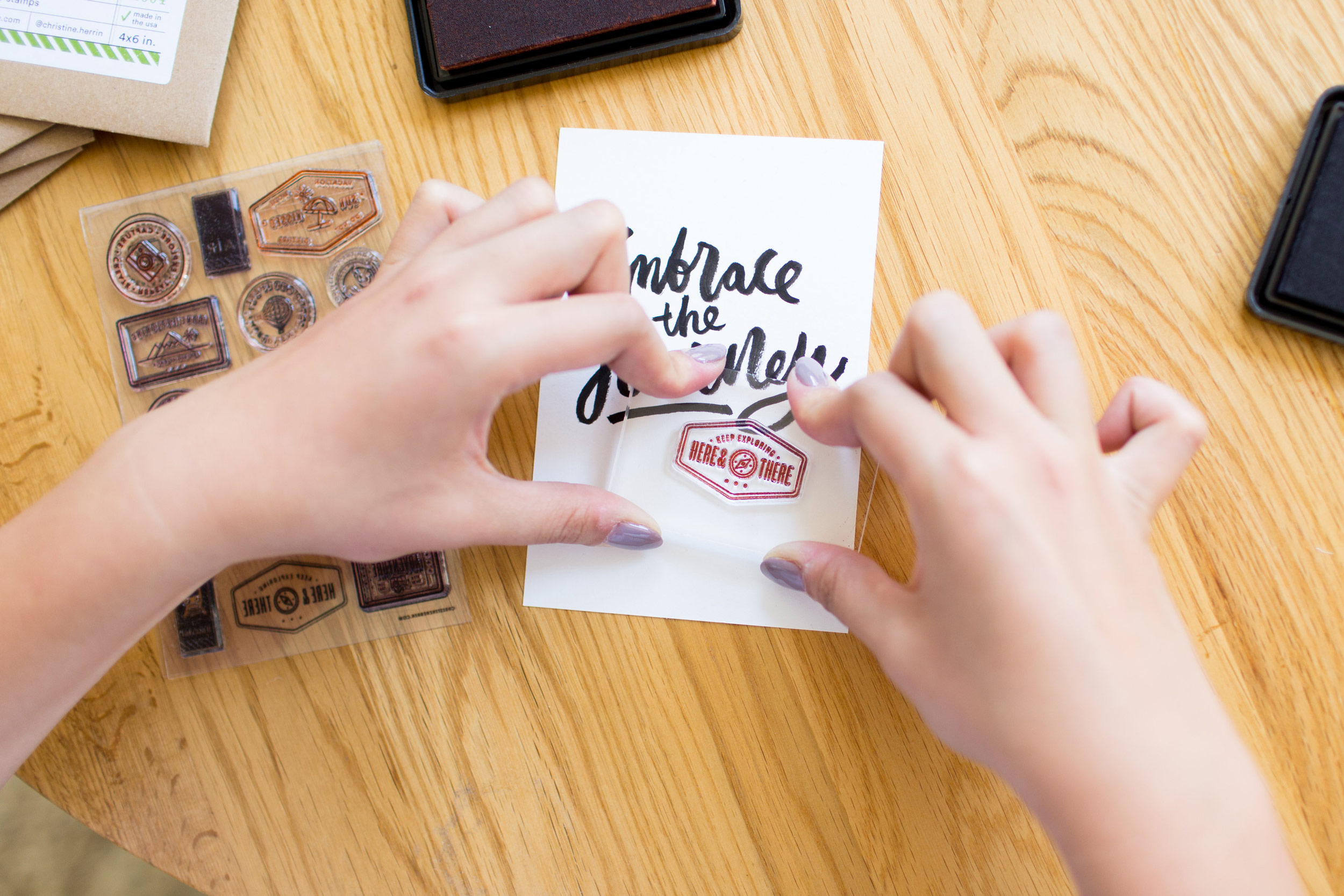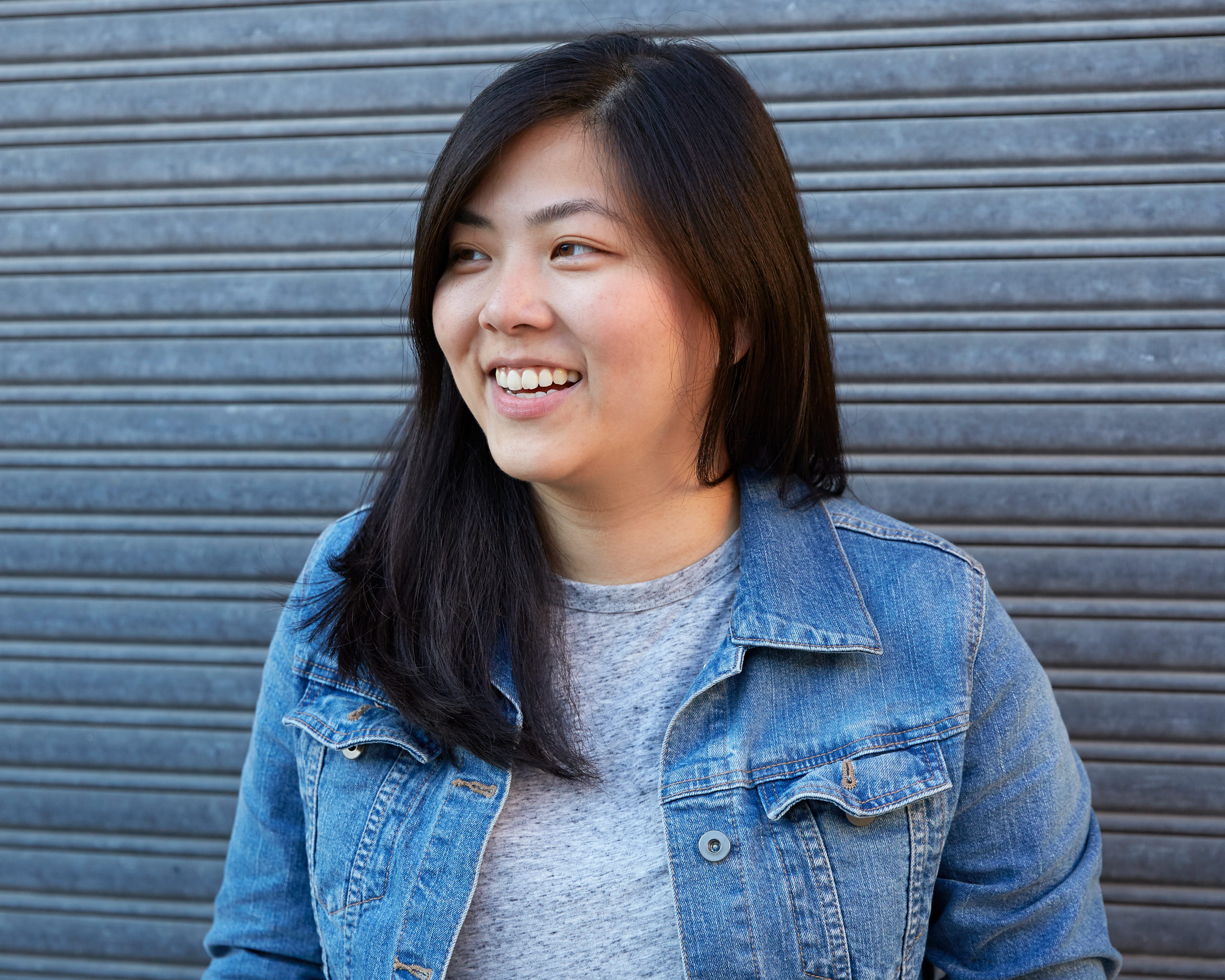
- Interview by Tammi Heneveld March 28, 2017
- Photo by Daniel Dent
Christine Herrin
- designer
Following an unconventional path, San Francisco-based designer, Christine Herrin, fought to stay true to her inner voice despite outside expectations and traditions rooted in her Manilan upbringing. Here, she opens up about finding her community by embracing her introversion, how she’s grown during her time as one of this year’s Adobe Creative Residents, and her desire to help people document their lives and engage with the world in fun and creative ways.
This digital feature is in partnership with our friends at Adobe to highlight the Adobe Creative Residency, a program that empowers talented individuals to spend a year focusing on a passion project while sharing their experience and process with the creative community.
You’re originally from Manila, Philippines. Was creativity part of your life there? Yes, definitely. I drew constantly and used early desktop publishing software my dad had on his computer to make magazines and newsletters with my cousins. My eldest brother taught me how to use Microsoft Publisher, and I designed layouts for school reports and class projects. I loved making anything that combined pictures and words.
But while I was a creative kid, I didn’t think I could actually do something creative as a career. Manilan society—at least when I was growing up there—tends to be very status-oriented, so going into a creative field isn’t always seen as a good thing. It’s the type of place where people expect you to become a doctor, lawyer, or engineer.
I’m lucky that my parents have always supported my interest in the arts, even though they don’t have creative careers themselves—my dad is an economist and my mom runs her own business. When it came time to decide what I wanted to study in college, I knew I wanted to become a magazine designer, but there wasn’t a dedicated track for it.
The closest major I could find was communications, but I ended up taking history since there wasn’t room in the communications program and it was one of my favorite subjects in high school. My dad told me that history would teach me discipline through all of the writing, reading, and research I’d be doing; then design would be something I could teach myself on the side.
Once I got to college, I found out that being a history major was still pretty unconventional compared to everyone else. The people around me were all aiming to work for national companies or big corporations once they graduated, so when I told them I was getting a degree in history, they were like, “What are you ever going to do with that?”
My family was also part of an even smaller community of Chinese Filipinos—my mom is Chinese and my dad is Filipino—where there is a certain path you were expected to take; if you went outside that path, you had a lot of explaining to do. Our friends and neighbors owned large businesses, and many of my friends had to study management or finance in college because their parents expected them to work in the family business once they graduated. That was everyone’s idea of success. But I couldn’t ever see myself doing that—I could barely pass my math classes! (laughing) I chose to study history because I thought it was fun, and I experienced a certain amount of judgement because of that.
I felt weird and unconventional throughout college, but once I graduated in 2007, I ended up landing a dream job for a magazine at Summit Media, one of the largest publishing companies in Manila—basically the Philippine version of Condé Nast. Once that happened, the same people who’d been questioning my career path the whole time suddenly decided it was cool. I thought, “Wait, now my career is acceptable to you?”
Had you been teaching yourself design on the side in college? Yeah, and I joined a few campus organizations that put out their own mini-magazines or newsletters just so I could get more experience designing layouts. But looking back, I’m thankful for my background in history: it ended up being so much more than what I think I would have gotten out of the communications program.
Throughout the time I worked at Summit Media, I carried around the belief that I wasn’t as legit as other people because I hadn’t formally studied design in college. When I interviewed for the position, they told me they made their layouts using InDesign. I had no idea how to use InDesign, but when they gave me some sample pages to do, I was able to teach myself how to use it well enough to be hired.
Actually, I ended up learning the most on the job. We were a small team of five and everyone juggled a variety of duties, so I learned typesetting and layout design quickly. I was technically a designer, but I also had to be a writer or creative editor as needed. Sometimes that meant I was in charge of finding illustrators for features, helping out on photoshoots, writing articles, and laying all of it out at the same time. I was also lucky to have worked with a meticulous editor-in-chief, who became a mentor to me there—I credit her with helping me improve as a designer. I consider my time at Summit Media as my official design education.
“I felt so much anxiety around having to explain myself to others, as I was still figuring it all out. I worried that it wasn’t acceptable not to finish school, but I wanted to get on with my career.”
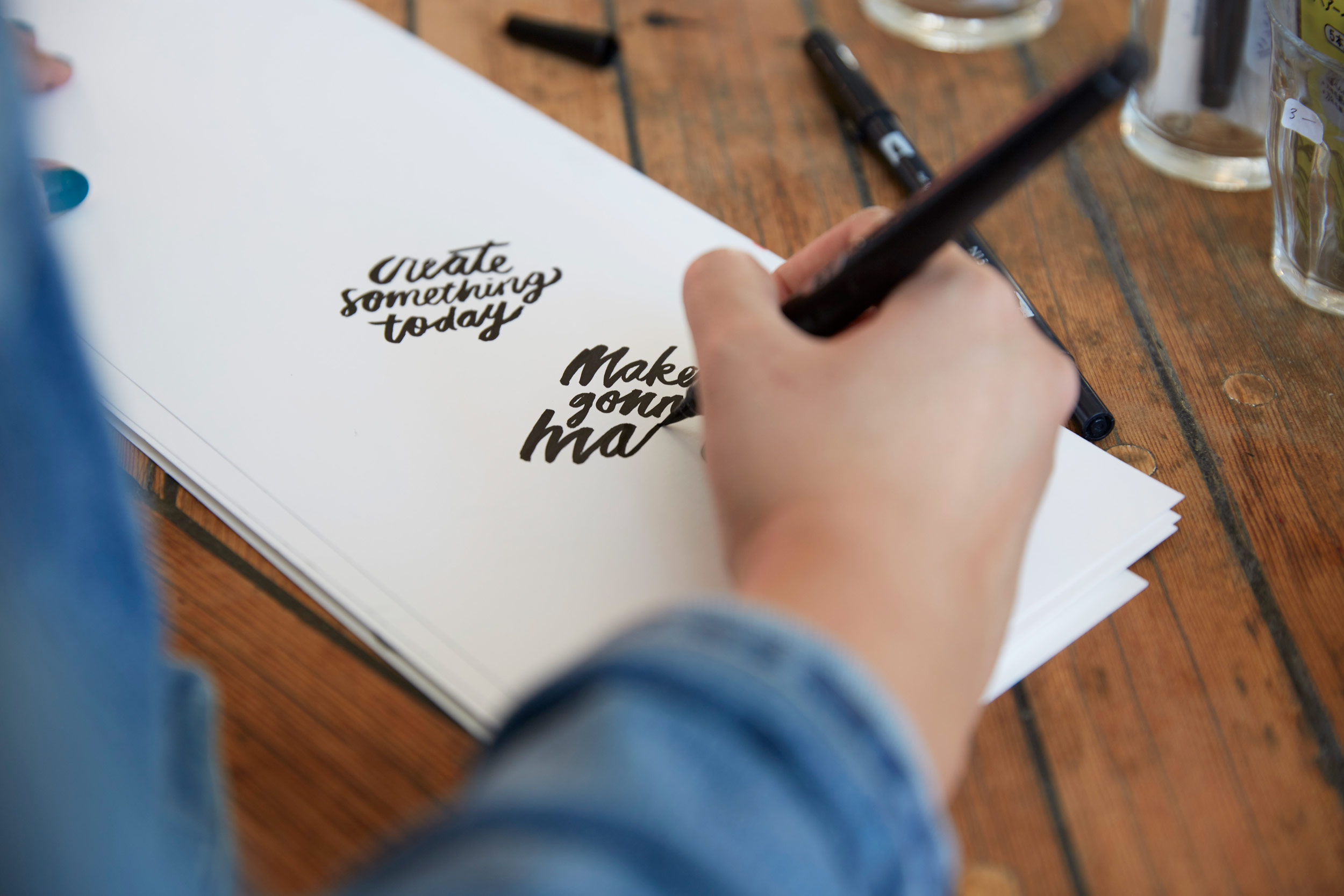
How long did you work there? I was there for about two and a half years before deciding that I needed something different—it was a mix of burnout and wondering what was next. When you work at a magazine, you kind of do the same thing over and over: once you finish one issue, you immediately start working on the next. I was also starting to feel exhausted and stressed out from all the times I didn’t come home until seven in the morning because we had to finish up an issue. I was lucky that the topics were fun, but they were still tween topics. This was around the time people like Justin Bieber and the Jonas Brothers were really popular, and I just remember thinking, “Oh my god, if I have to look at Justin Bieber’s face one more time…” (laughing)
At one point, someone asked me where I saw myself in five years. Suddenly, I thought, “Why am I here? What am I doing? Everyone says this is where I should want to be, but is this what I want?” I realized I didn’t want to become the next editor-in-chief, which was the only path I could ultimately take besides becoming an art director at another publication there.
Was there a moment when you realized what to do next? Yes. One night at about 3 am, I was working on something in my cubicle. Over time, I’d collected different books on my desk that I’d look through for inspiration on layouts or colors. I started flipping to the back covers on all of them, and most of them said they were made by Chronicle Books in San Francisco. I thought to myself, “What is this magical place they call Chronicle Books?!” (laughing) They’d made all the amazing stuff I was inspired by, so I wondered if there might be more opportunities for me in a place like San Francisco.
A year later, I decided I would move to San Francisco. Unfortunately, I couldn’t just up and leave, because people in my community didn’t usually do that without a reason. I thought about it and figured that Chronicle Books would never have me without a formal design degree, so attending grad school seemed like the next logical step. Even though I really did want to pursue a design degree in San Francisco, I also knew it was a better excuse than just wanting to go explore.
What did your parents think about you wanting to pack up and move across the world? My dad was very supportive. He earned his Ph.D abroad, so he thought it’d be a good experience for me. My mom, although always one to encourage me to try new things, took a little more convincing. She asked, “Are you sure? Do you think you’ll be okay?” I was probably 25 at the time, so I felt capable of doing something like that on my own. In 2011, I left Manila.
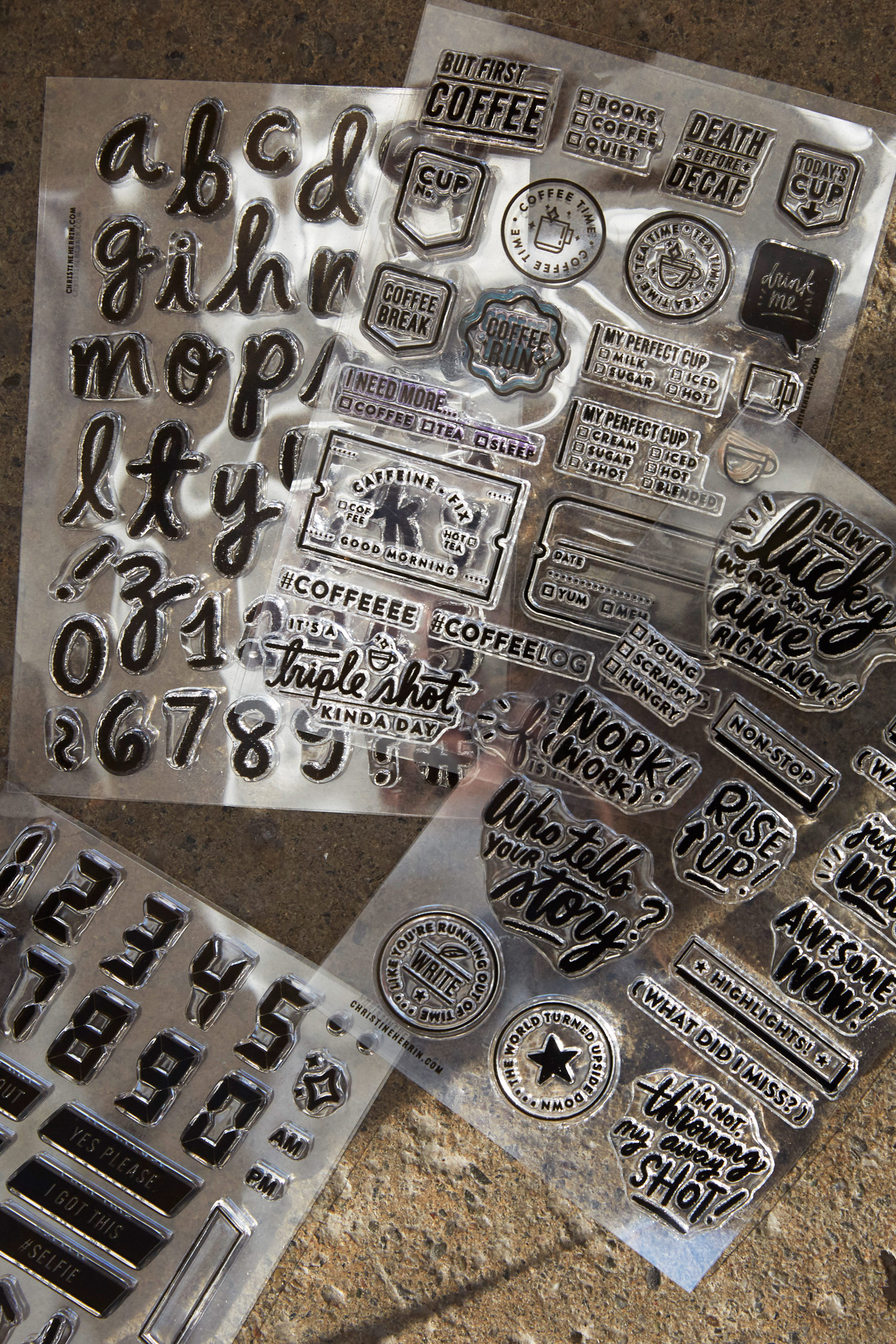
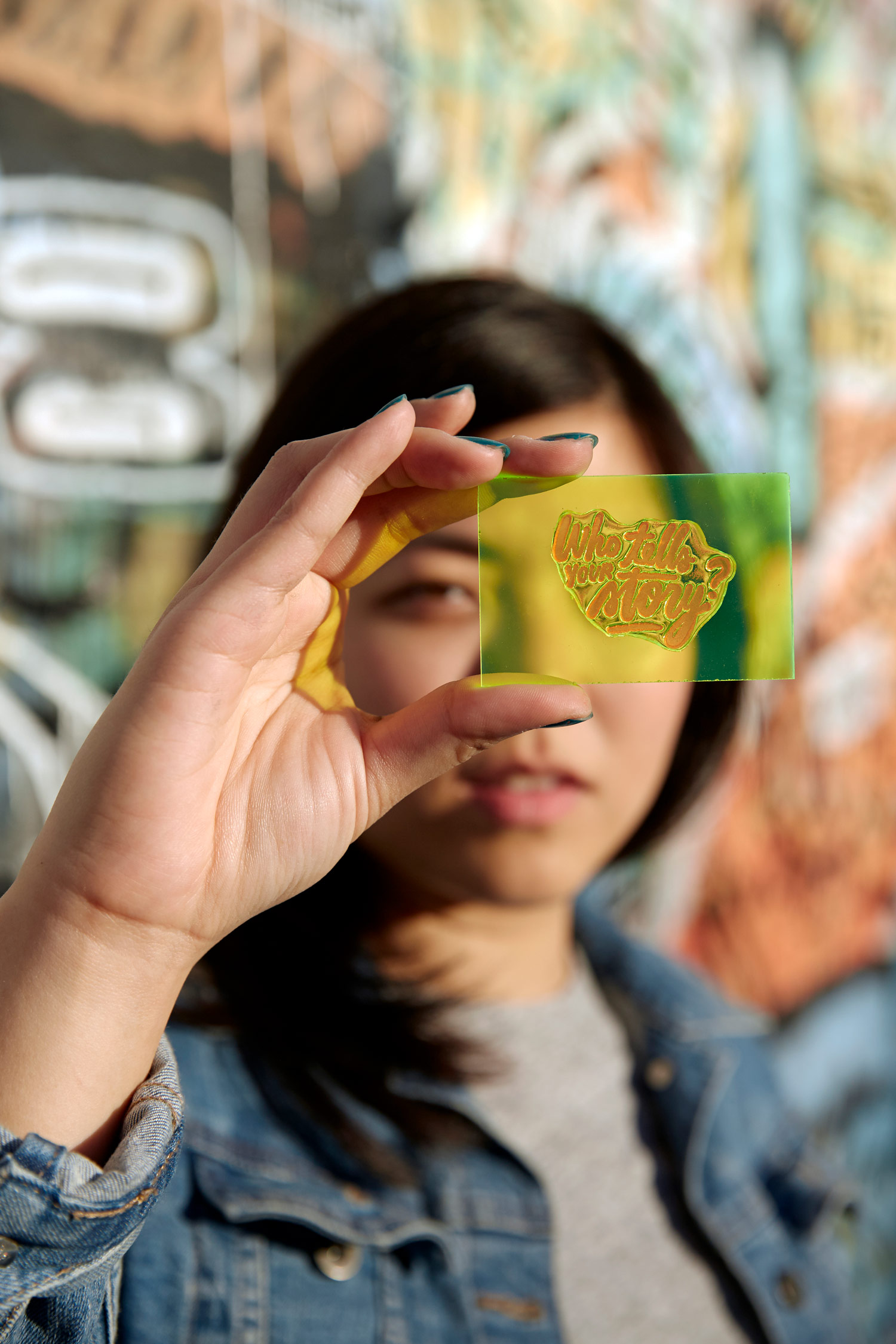
What happened once you arrived in San Francisco? I enrolled in grad school at the Academy of Art University and signed up for classes part-time so I could intern or work a part-time job. I worked at internships all throughout school, so I was only taking about two classes at a time. I was lucky that a few of the companies looking for interns had gotten my name from one of my professors. I interned at places like 826 Valencia and a creative agency, called Albertson Design, which did work for the annual TED conference. Those places helped my design skills grow so much.
After a while, my real-world design work started competing with my schoolwork. I’d come home exhausted from working on a big campaign at an internship and think, “Crap, I have to do this class project, but it’s not even real!” (laughing)
That brought on a big, personal crisis for me. I wondered why I was still going to school at all. I felt like the goals of the school were centered around getting students hired by big tech companies and design studios, but I wasn’t sure if I wanted to do that, because my style didn’t seem to match what those kinds of companies were looking for. I remember being rejected from a design job laying out PDF books because I didn’t have enough “tech experience.” I wanted to tell them that I actually had years of publishing experience, but I felt discouraged, believing my skills didn’t match what the tech scene wanted. I started thinking about the bigger picture of my life and decided to skip enrollment for the following semester. I’d been doing enough internships and contract work that I decided to go out on my own as a freelancer.
When I went home for the holidays, the Manila mindset started catching up with me. People kept asking why I hadn’t graduated yet, since I’d been in school almost three years at that point, and I kept having to explain that, “I didn’t drop out, I just didn’t enroll again—it’s a different thing!” (laughing) It was so frustrating. I felt so much anxiety around having to explain myself to others, as I was still figuring it all out. I worried that it wasn’t acceptable not to finish school, but I wanted to get on with my career.
When I look back, I’m glad that I went to grad school. I had great professors who were really encouraging and honest with me about what skills I needed to build on. I feel like I learned more real-world design skills from interning, but school gave me the discipline needed for building out big projects on my own. I’d have to design an entire identity system by myself, so I learned how to break everything down and figure out how to get all the different elements printed and produced. I also had to learn how to present my work in front of a group and have it ready for critique.
Possibly the biggest benefit of grad school was all the people I was able to meet. It gave me time to find community in San Francisco. I joined a coworking organization, called Makeshift Society, and had time to attend design events and volunteer for conferences. Those experiences were so valuable for me, because it’s how I was able to meet awesome folks who’d end up giving me freelance jobs or introduce me to people who’d hire me. Grad school gave me time to answer questions like, “What’s the community like here? Where can I find my place?”

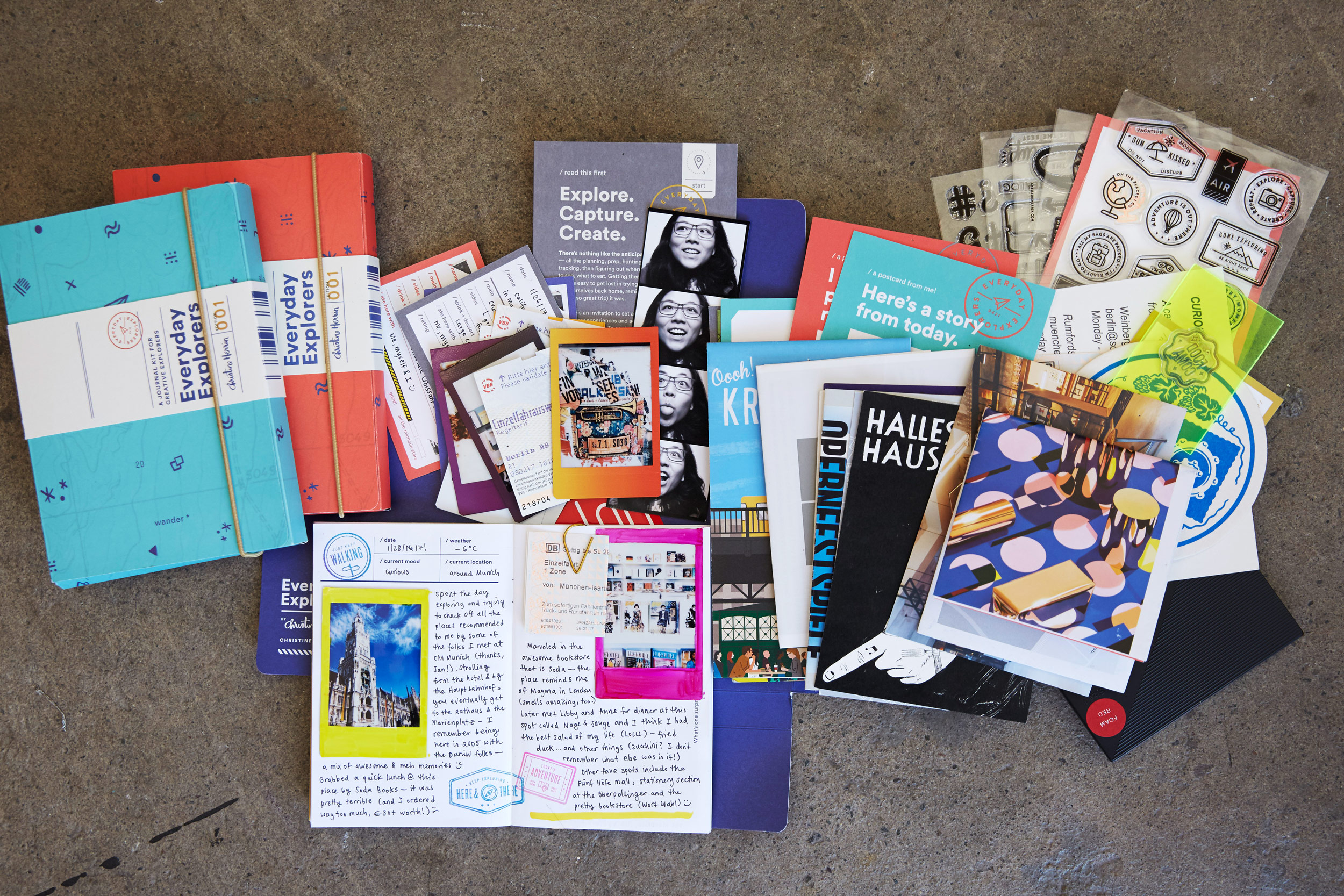
Is that what led to your Adobe Creative residency? Yes, it was. Makeshift Society, which actually closed its doors last year, was run by a woman named Rena Tom, who is well-known in the San Francisco creative and craft communities. I received an email from someone at Adobe named Libby explaining that Rena had passed my name on to her, because Rena thought I was doing interesting work. I was amazed that Rena had remembered me or my work, let alone would recommend me for something, since I’d maybe only met her once! Libby told me about the residency and encouraged me to apply.
As awesome as that sounded, it also scared me. I didn’t even know what kind of work I wanted to do yet, and dedicating a whole year on something like that really intimidated me. I felt too afraid to apply, so I talked myself out of it. It actually wasn’t until the following year, when Libby contacted me again and asked if I was thinking about applying, that I finally felt ready. I still tell Rena that all of this wouldn’t have been possible without her.
That’s really cool. It sounds like even when you felt unsure of yourself or pressured by other people about what you should do, you still chose to follow your own path. Yes! But that doesn’t mean there wasn’t a lot of anxiety at each step along the way. I chose an unconventional path, so I wasn’t sure if it made sense all the time.
For example, around the same time I started freelancing, I also started my own business designing small paper goods for scrapbooking. For a long time, I felt like the designers I was going to grad school with worked at cool tech companies and design studios; but there I was, trying to come up with designs for stamps, of all things! When I was considering whether I wanted to continue going to school or not, I didn’t know if my tiny business would sustain me. How was I going to tell people back home in Manila, “No, I didn’t go back to grad school, but I sell stamps now”? (laughing) I decided that I was just going to try it—and if it didn’t work out, then I could always get a day job or find other freelance work.
It was hard in the beginning. People asked, “So what are you doing now?” And kept looking for milestones I didn’t have. I was busy slogging away, trying to run my little side business and find freelance clients. For a long time, I felt like I was stuck in a rut; I figured that as long as I could pay my rent each month and have enough money to travel, then I was happy. But in the back of my mind, I wondered, “Can I call myself successful?”
Last year was when I chose to stop caring about all the milestones other people were holding me to and focus on what I want to do with my life. But it took me almost three years after leaving grad school to be able to do that for myself.
“…I chose to stop caring about all the milestones other people were holding me to and focus on what I want to do with my life.”
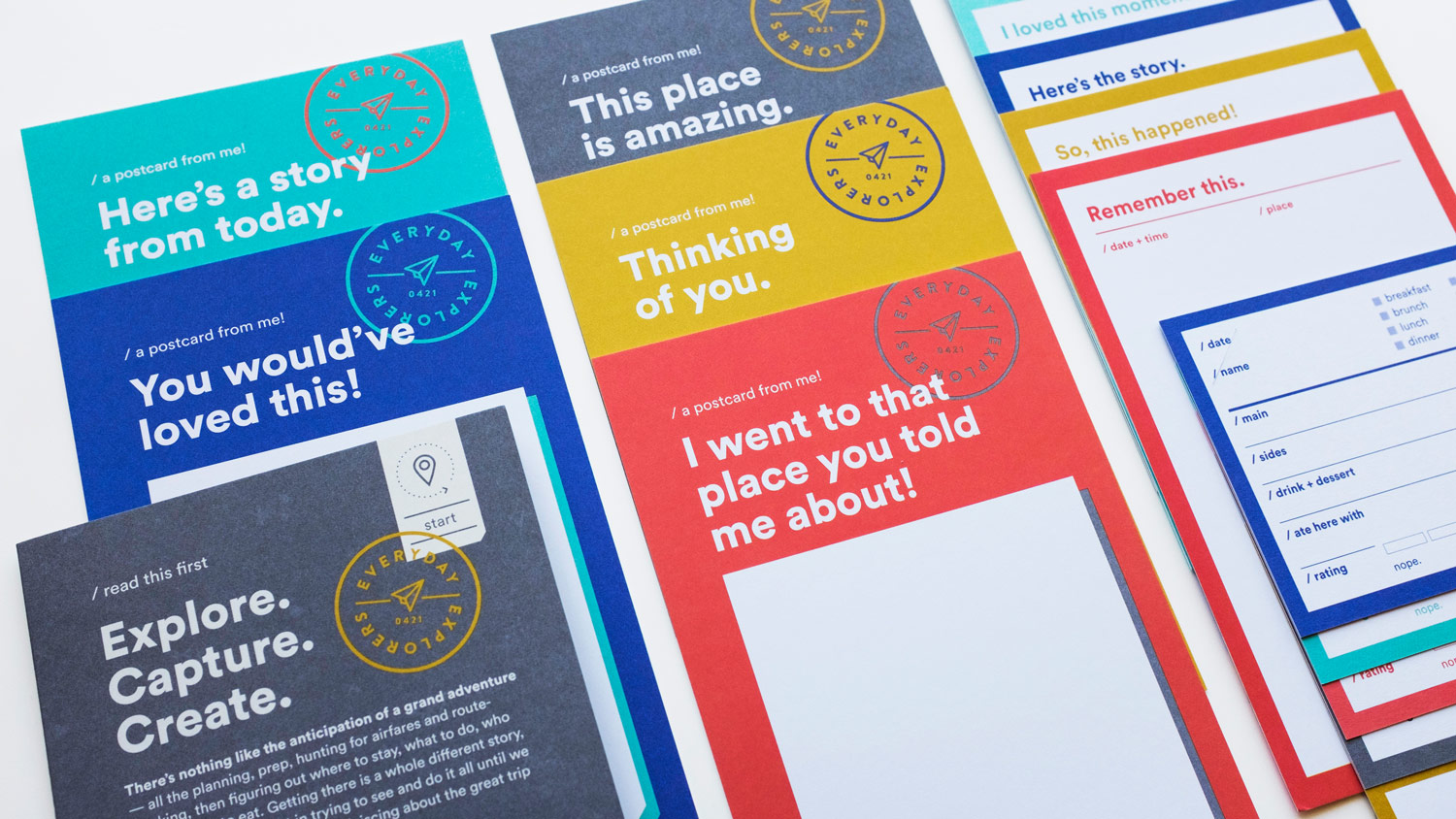
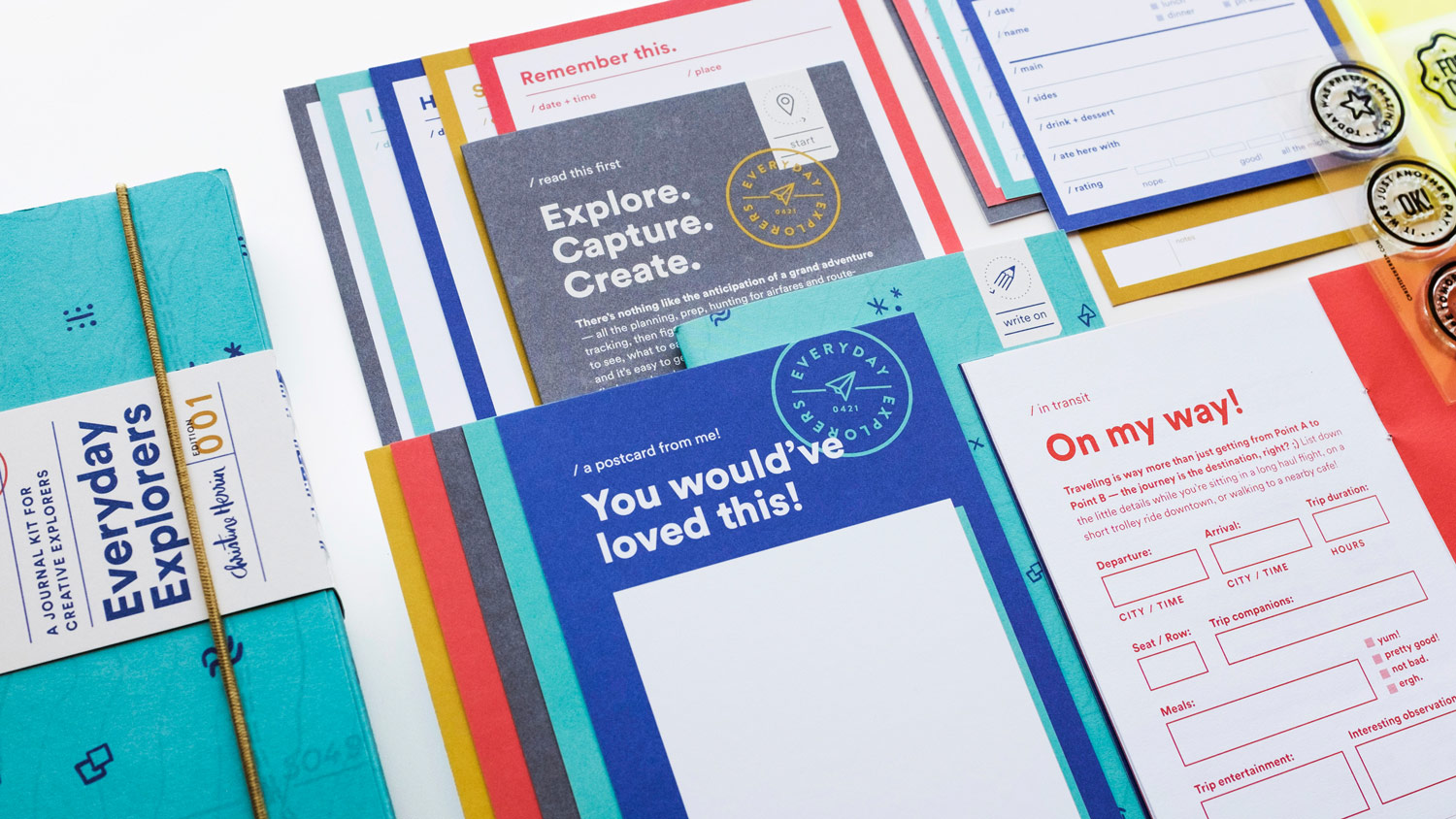
What has the residency been like for you? My overall goal for the residency was to develop a line of paper products for people to document their lives in a more creative and engaging way.
The beginning was focused on meeting with my mentors to distill the “why” of my products: Why documenting? What’s so special about it? How could I get people excited about this? And why should they be excited? They got me to start thinking about the core mission and vision of my products.
Adobe then started sending me to events where I could talk to people about my project. Because I hadn’t developed any of the products yet, I was forced to come up with small prototype versions, like little activity books related to my product line’s theme of documentation. I talked to people about what I wanted to do and why I wanted to do it, which started to help me think about how I wanted to do it.
Around the halfway point of the residency, I finally had to sit down and start creating products. I needed to meet a Christmas deadline: Adobe was sponsoring a big craft fair, called West Coast Craft, and invited me to set up a booth there. In October, I was busy designing my first product and getting it to the printers right away, all while continuing to speak at conferences and attend workshops with my Adobe mentors!
Was that what eventually became the Everyday Explorer’s Journal Kit? Yes, that’s the first product in the line. It’s a kit that includes creative prompts, a daily journal, postcards, little log cards, and a stamp set and clear block. It’s essentially a portable scrapbooking pack people can use to document their travel experiences in fun new ways.
That brings me to where I am now—and we only have about two months left! Now I’m focused on experimenting with my product and figuring out how to sell it. I’ve been giving it to influencers and fellow designers, asking them for feedback and seeing how it can evolve.
The biggest challenge now is figuring out how to reach new audiences, ones that aren’t already within the scrapbooking community. The audience I’ve built has responded really well to the journal kit, but that’s because they already understand and appreciate what it’s for and how to use it. I want to reach people who aren’t necessarily scrapbookers, but who still enjoy traveling, documenting, and doing something creative. How do I get those people excited?
The rest of my time in the residency will be focused on diversifying my offerings and figuring out how to make my products sustainable: Do I sell to retailers? Do I find a distributor? Do I pitch it to a publishing company, or do I produce them all myself? I’m still figuring all of that out.
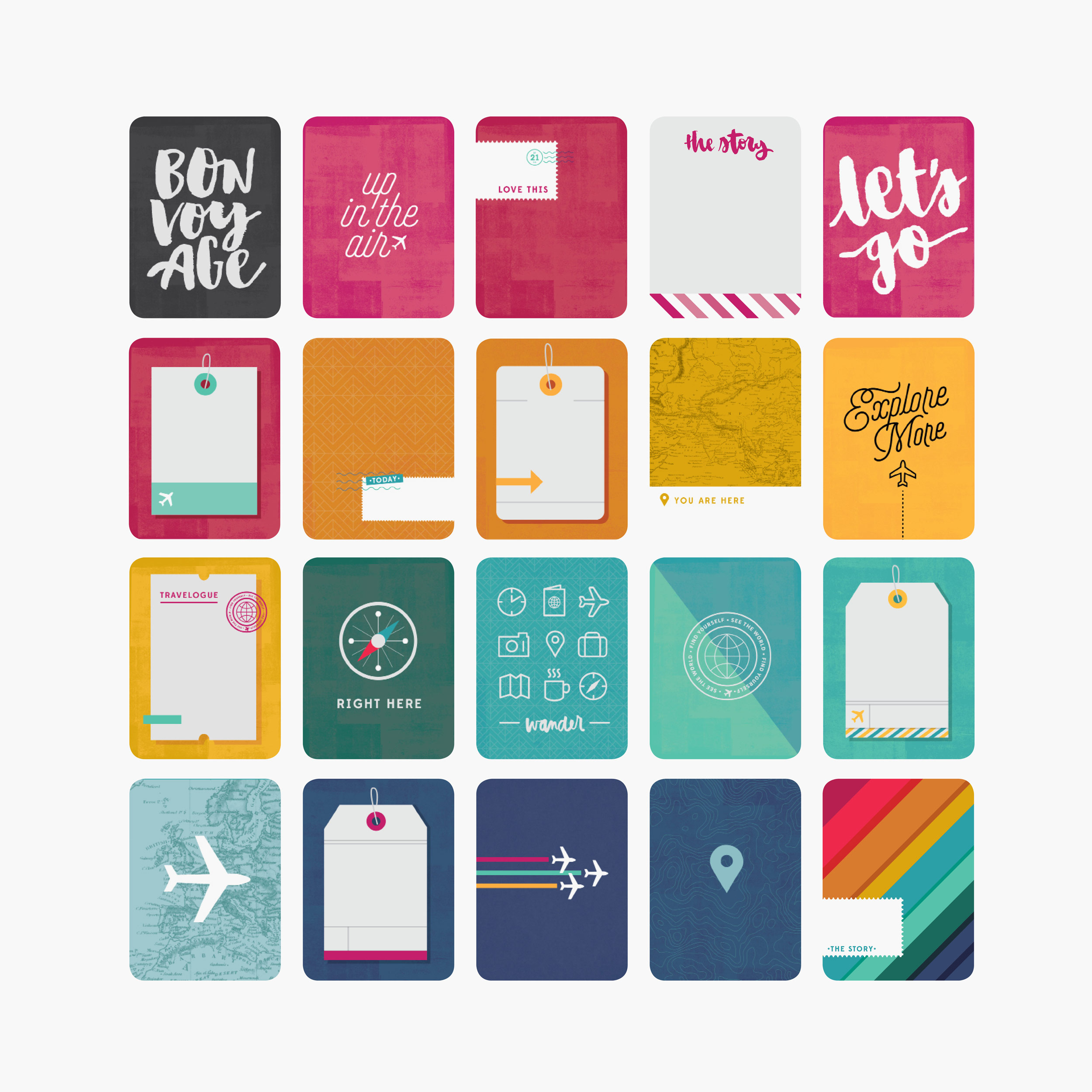
“…a lot of my initial path was full of questioning whether the things I was interested in were acceptable or cool enough to be legitimate. And then I realized that I just needed to do my own thing, because it’s my life: I’m the one who has to live it!”
You mentioned traveling being important to you. How has traveling impacted your creativity and the work you do? A few years ago, I made a promise to myself that every year I would go to one place that I’ve never been. I make a point to travel as often as I can, because I like to joke that I come up with my best ideas on 14-hour flights or really long train rides. Maybe I just need to turn off my internet to recreate those scenarios? (laughing) I feel like I work best in transit, sitting at a café in a random city somewhere.
It sounds so cliché, but I’ve found it really shakes up my creative process. Whenever I become too comfortable, it’s a good sign that I need to go somewhere new so I can detach from my everyday life and way of thinking. I calculate where and how often I get to travel by how many freelance gigs I can get, like, “I think I have enough to go to London!” Or, “Okay, I only have enough to go as far as Portland this month.” I don’t even mind booking an Airbnb in a nearby city if I can’t afford to go too far at the time; I just seem to get more work done when I travel, regardless of where I go.
What has been an important lesson you’ve learned so far? One of the biggest things I’ve learned is that there are no shortcuts. Things take time, and you have to let them build up in their own way. It’s so easy to say things have worked out now that I’m where I am and doing what I’m doing; but when you’re in the messy middle parts, it’s easy to feel lost. I realized that I couldn’t expect success right away, and that wanting instant results will make you crazy.
One of the biggest lessons I’ve taken away from the Adobe Creative Residency is that while I love to go crazy on design elements, I had to consider the business side of my products, too. It’s natural to want to cater to other designers, but the average person doesn’t necessarily want all the color swatches and gold foil everything. Sometimes you have to be your own project manager and say, “Nope—this is due tomorrow and you can only print these two colors on this paper stock because that’s what will sell best within the budget.”
I also feel like I’ve grown so much this year. The Adobe Creative Residency has taught me how to face my fears of speaking in front of big crowds and sharing my work—the work I earlier thought no one would understand because it wasn’t seen as cool. I can own my style and work now, because I know my people are out there. Sharing my creative struggles with perfectionism and overthinking has helped with that, too: a lot of folks I meet at conferences laugh and say, “Me, too!” Ah, my people!
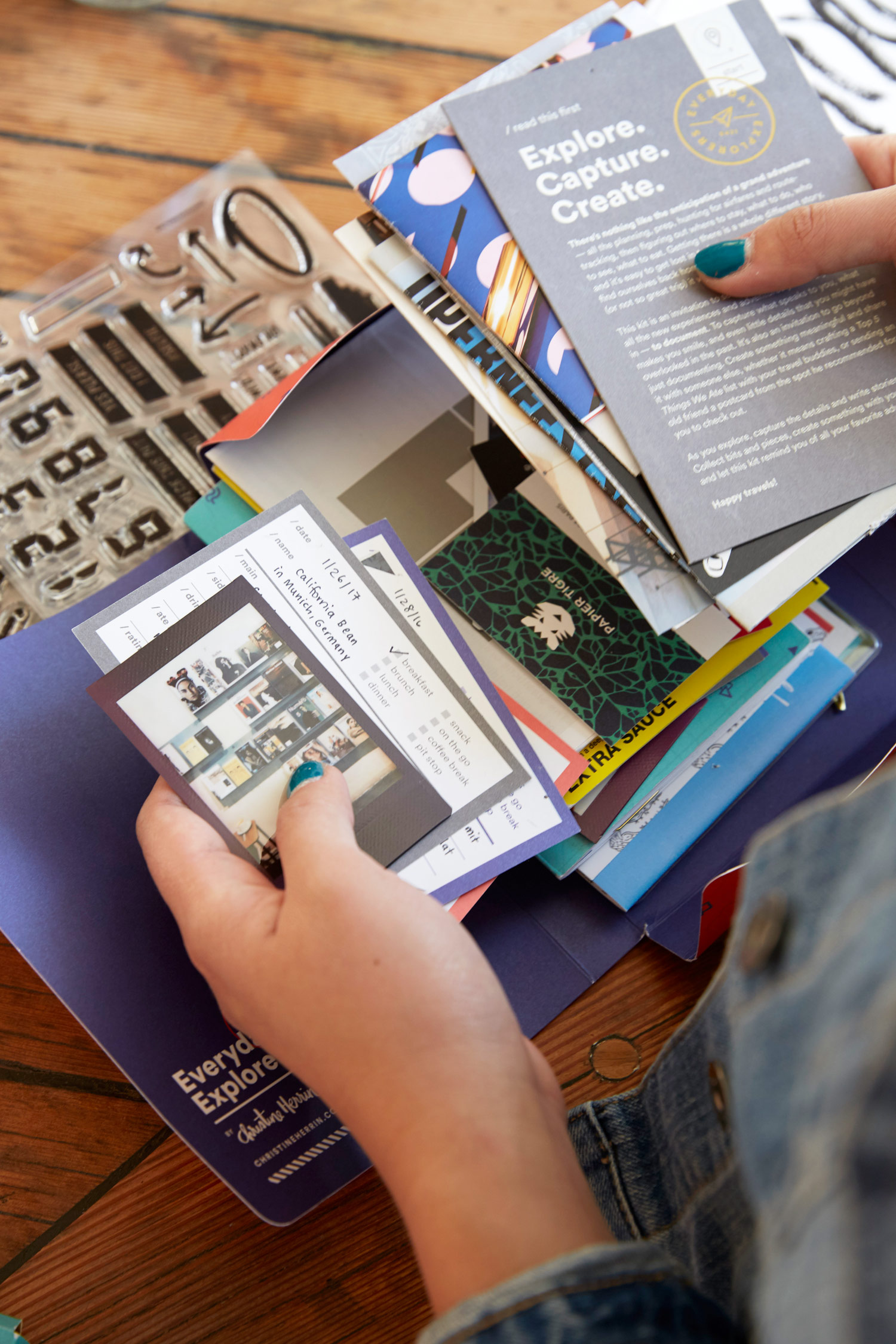
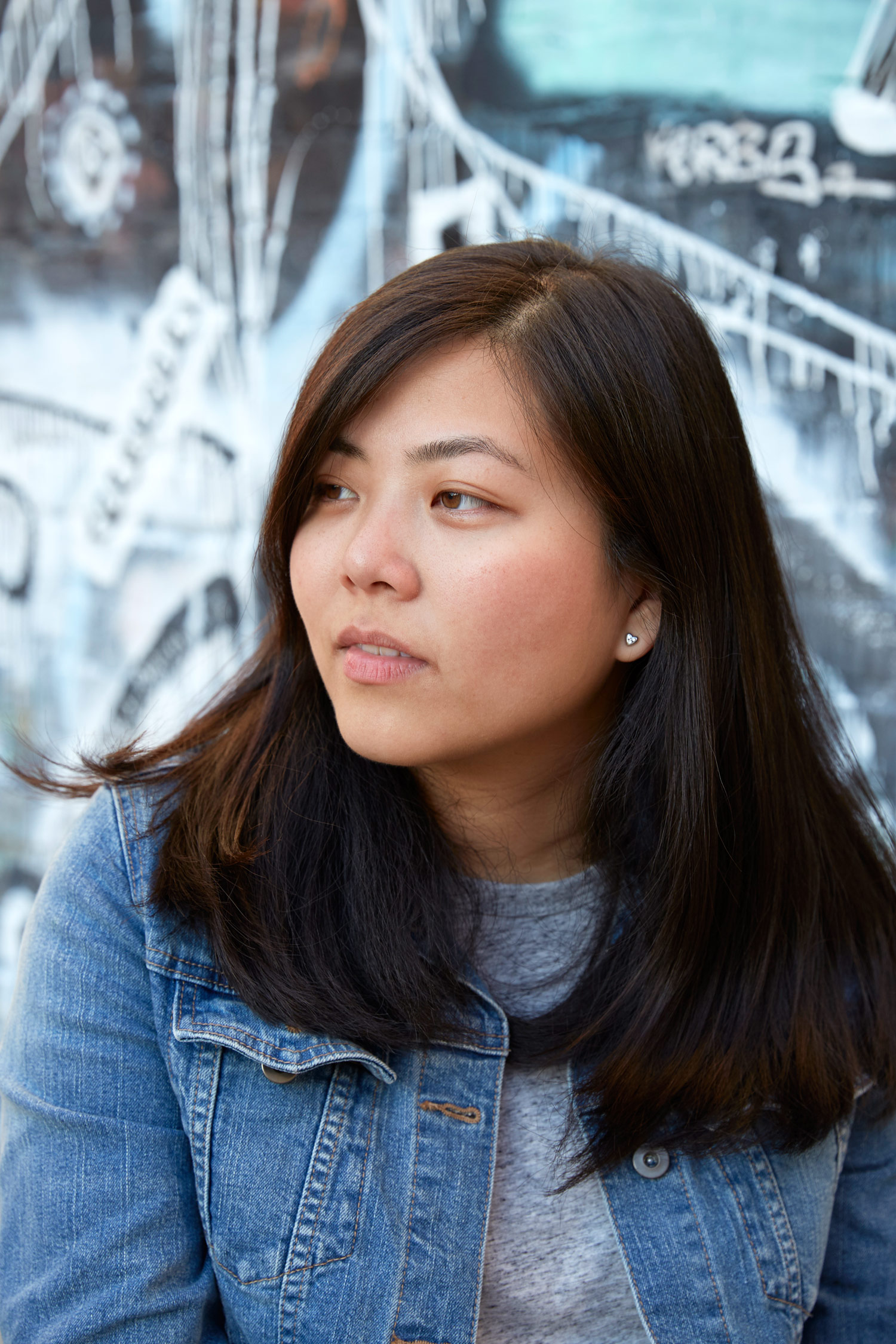
Is there any advice you wished you’d had when you were just starting out? I think I just needed the assurance that everything would all work out. It’s so hard to tell someone that when they’re starting out, though. I remember being so anxious about my future, wondering what was going to happen to me. I wish that my past self had more confidence in my work, no matter how unconventional. I feel like I could’ve created and shared so much more if I wasn’t so worried about what people thought about it.
No one ever knows exactly where their path will lead, but if you make sure to follow your internal compass and not let other people’s assumptions of who or what you should be or do, things will probably be alright. You just have to know who you are first, which ultimately helps you figure out how to get where you want to go. Yeah. In the beginning, a lot of my initial path was full of questioning whether the things I was interested in were acceptable or cool enough to be legitimate. And then I realized that I just needed to do my own thing, because it’s my life: I’m the one who has to live it! Yeah, it might sound super cool to be able to tell people I work at Google, but is that actually what I want to be doing every day? That was a question I needed to answer in order to figure out what I really wanted.
I also got lucky in that I was able to meet people who were successfully doing what I wanted to do, which helped convince me that it wasn’t totally unrealistic to think I could turn my interests into a career. I had to see someone else doing it to know that it was something I could do myself.
Now that you’ve figured that out, what are you most excited about working on or exploring in the future? I’m only thinking as far as the next two years, though I definitely want to build my business beyond that. It’s fulfilling to design new products and see how people react to them, so the next step is to come up with more products that can engage with wider audiences. I’m already bursting with ideas—the next step is which ones to make happen, and how!
“It’s fulfilling to design new products and see how people react to them, so the next step is to come up with more products that can engage with wider audiences. I’m already bursting with ideas…”
